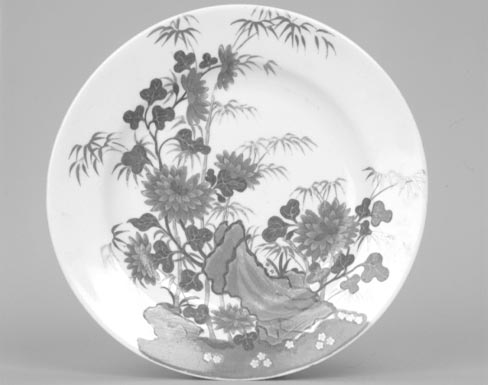Exhibit Review
Taste of the Table: Ceramics in Early Maryland
The Homewood House Museum, Johns Hopkins University, Baltimore, MD. Curator: Diana Edwards
September 4–November 30, 2003
The Homewood House Museum is on the campus of the Johns Hopkins University in Baltimore and was a wedding present in 1801 from the wealthy Charles Carroll of Carrollton to his son, Charles Carroll Jr. The museum is an appropriate venue for the exhibit, Taste of the Table: Ceramics in Early Maryland, that features ceramics from the 1720s to the 1830s, when Baltimore was at its height as a leading cultural and urban center. Taste of the Table is one in a series of special exhibits reflecting on the cosmopolitan lifestyle of Homewood House's occupants.
The historic residence is considered to be one of the "finest surviving examples of federal period architecture," and today's visitors are transported to the early 19th century. From the luxury furnishings in the various rooms to the well-polished metal wares, there is an aura of formality and domesticity, necessary attributes for the exhibit.
The exhibit's historical and narrative arc follows the privileged diners in the Maryland area, such as the Carrolls, the Calverts, and the Stones, first families of the new nation. The exhibit covers a range of availability, technology, and craftsmanship, from formal tea service to water pitchers, from stoneware to porcelains. The earliest works exhibited are low-fired ceramic pieces, such as the partially reconstructed English imported delftware plate with a crude image of a mermaid, dating from 1720-1725. This type of object was commonly found on the waters' edge in establishments like Rumney's Tavern in London Town.
 |
 |
These ceramics from the Taste of the Table exhibit illustrate the kinds of fine porcelain used in Baltimore, MD, from the 1720s to the 1830s when the city was at its height as a leading urban center. (Courtesy of the Homewood House Museum.) |
Some early 19th-century objects represent the competing interests of ornament and function. The English porcelain dessert service of Alexander Brown, with gilt lace and the family crest of a feline paw hovering over a ring of olive leaves and pawing a severed human hand, is contrasted by the splendid golden earth tones of a higher quality Chinese vase, elegantly depicting a landscape. Later, mass-produced imports were intended to meet the demand for durable and inexpensive wares.
To place the ceramics in context of the colonial and postcolonial society and economy requires a discussion of inventories, both probate and unregistered, to understand the underlying cost of the prized possessions. Although Maryland had a fair amount of trade in various goods, none was as lucrative or unpredictable as tobacco. Enslaved labor working tobacco fields produced the means for acquiring these luxury items. The tour guide pointed out a favorite Chinese porcelain, decorated with crenate edging and an extravagantly painted likeness of the cash crop, an object that particularly symbolizes the growing wealth in 18th-century Maryland. Nearby are large creamware jugs that Carroll descendants claim were used to serve cider to the servants in the fields of the Carroll estates.
Taste of the Table demonstrates the ongoing interest in ceramics and the economy and culture that supported their acquisition. Although the exhibit brochure provides more detailed discussions on the objects and their context, the exhibit text could have benefited from more description of pieces such as the delightful French biscuit porcelain set of figures representing gods and goddesses on the dining room table. As evocative as the ceramics are, the exhibit's poor lighting make viewing the pieces difficult. And some objects and their labels are placed too low to read or too high to view their details.
Upon exiting the exhibit and a tour of the house, I felt that I had learned so much, yet wanted to know more. A quote from Robert Hunter came to mind: "Archeology often provides more questions than answers." A number of subplots are hinted but not addressed. The bricks that comprise the major building material are a form of ceramics as well. Who fired the clay and assembled the red brick house? For this exhibit, the envelope of the home provides the perfect context for broader interpretation.
Douglas A. Williams
Morgan State University
